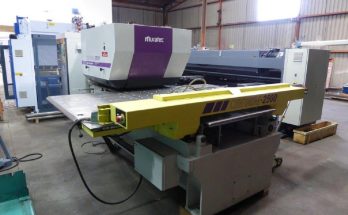Dental practice transitions can be a significant milestone for dentists, whether buying or selling a practice. This process involves a variety of legal, financial, and operational considerations that require careful planning and execution. The article will explore the different types of dental practice conversions/transitions available in the market, why they occur, and the steps involved in successfully navigating them. It will also provide helpful tips and strategies to ensure dentists can achieve their goals and secure long-term career success.
Types of Dental Practice Transitions
There are several types of dental practice conversions available in the market today. Here are some of the most common ones:
Buy-Out
A buy-out is when one dentist buys out another dentist’s entire practice. This transition is usually done when the selling dentist is retiring or moving out of state.
Buy-In
A buy-in is when a new dentist buys into an existing practice as a partner. This type of transition is usually done when the selling dentist wants to reduce their workload or retire in the future.
Associate to Buy-In
An associate-to-buy-in transition occurs when an associate works for an established dental practice for a certain period before buying into it as a partner.
Associateship
An associateship is when an associate works for an established dental practice without plans to become a partner.
Merger
A merger occurs when two or more practices combine into one entity. This type of transition can benefit both parties involved, as it can increase patient volume and revenue.
Roll-Up
A roll-up involves acquiring multiple practices under one management structure. This type of transition can be beneficial for dentists who want to expand their business quickly.
Affiliation
An affiliation involves partnering with another company that provides support services such as marketing, billing, and administrative tasks. This transition can benefit dentists who want to focus on patient care while leaving other aspects of their business operations to experts.
Each type of transition has its unique benefits and challenges. Dentists should carefully consider their options before making any decisions.
Reasons for Dental Practice Conversion
There are various reasons why dental practice conversion occurs. The most common reasons include retirement, relocation, health concerns, and financial struggles. Dentists may sometimes want to transition their practice to a family member or colleague they trust. Other times, dentists may want to sell their practice to a larger dental group or corporation to benefit from economies of scale and increase profitability.
How to Navigate Dental Practice Conversion Successfully
Navigating dental practice conversion successfully requires careful planning and execution. Here are some tips on how to make the transition process smoother:
Hire a Professional Broker: Hiring a professional broker can help ensure the transaction goes smoothly by guiding the process.
Conduct Due Diligence: Conducting due diligence on potential buyers or sellers can help avoid any surprises during the transaction.
Get The Finances in Order: Getting the finances in order before starting any negotiations can help ensure that the individuals have enough funds available for any necessary investments.
Communicate Effectively: Effective communication between all parties involved in the transaction is crucial for ensuring that everyone’s needs are met.
Plan Ahead: Planning can help avoid any last-minute complications during the transaction process.
Conclusion
In conclusion, dental practice transitions are complex processes that require careful consideration and planning. Whether buying or selling a dental practice, working with experienced professionals who can guide them through every step is essential. By understanding their options and taking proactive steps toward success, individuals can achieve their goals and ensure long-term success as dentists.




